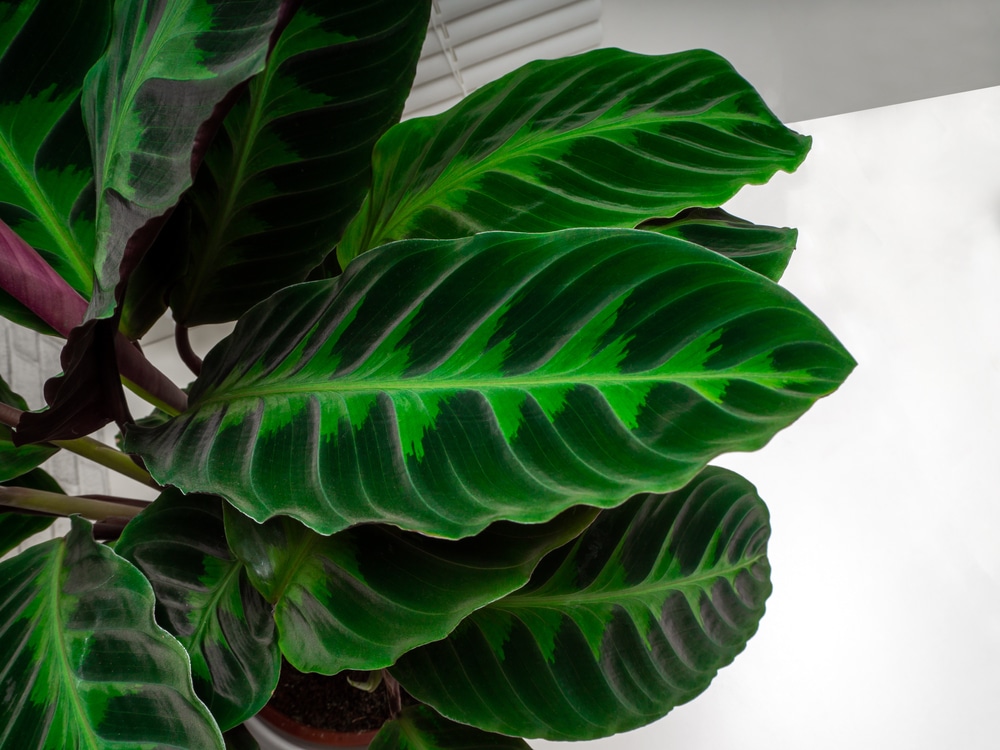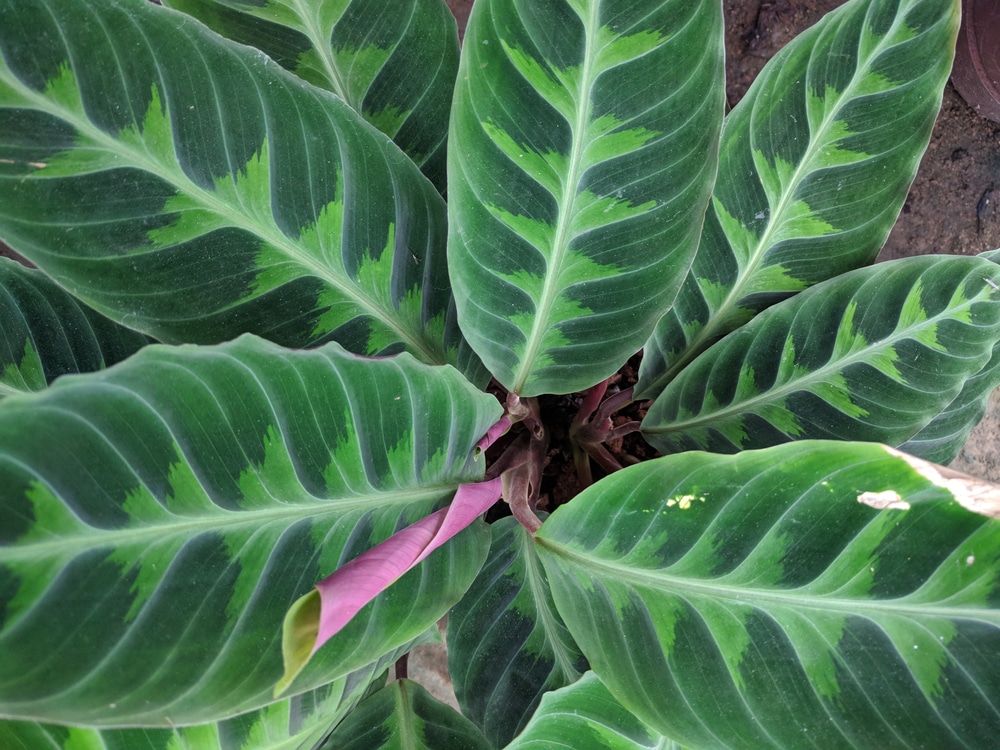If you want to add a plant to your collection, the Calathea Warscewiczii may be the plant you are looking for. Learn more about the care required for this plant.
| Botanical Name | Calathea Warscewiczii |
| Common Name | Calathea Jungle Velvet |
| Plant Type | Perennial |
| Flower Color | Cream-colored, cone-shaped flowers |
| Size When Mature | 36-48 inches |
| Bloom Time | Late winter and early spring |
| Sun Requirements | Indirect sun |
| USDA Hardiness Zones | Zone 11 |
| Soil PH Range | 6.0-7.0 |
| Soil Type | Well-draining |
| Water Needs | Medium |
| Native Area | Central/South America |
What You Need To Know About Calathea Warscewiczii
Calathea Warscewiczii is a tropical plant with patterned leaves that is one of the most interesting of all Calathea varieties. Its two-toned green and burgundy leaves are popular with house-plant lovers.
The plant is also known as Calathea Jungle Velvet and is a member of the Prayer plant family from Central and South America. They grow to large sizes, between 3 and 4 feet in height.
It is famous as a temperamental plant that is hard to care for. This is because indoor conditions are so far removed from the natural environment that the plant flourishes in (high humidity and warm temperature). To replicate their requirements as closely as possible the plant should be kept in bright, indirect light and warm temperatures. It is also paramount to keep the soil moist.
How to Care For Calathea Warscewiczii
Here is everything you need to know about growing and caring for a thriving Calathea Warscewiczii.
Light
Calathea warscewiczii needs medium to bright indirect light. In direct sun, the leaves become damaged (something that is easily remedied if caught in time). It is paramount to make sure you protect the plant during the brightest and hottest part of the day. This may mean bringing it inside or ensuring it is somewhere in your home where it is only in the sun for part of the day.
If you don’t have a well-lit home, you can also use a grow light to ensure your plant gets the sunlight it needs without overwhelming it.
Water and Soil Needs
Calathea Warscewiczii is a high-maintenance plant that needs consistent care. Ensure the soil stays moist throughout the day. But it shouldn’t ever be overwhelmed with water or allowed to dry out entirely. They are high-maintenance plants, so any break in a regular watering schedule can show in the plant’s leaf health.
During the hottest part of the year, it is good practice to water the plant when the top half-inch of soil is dry. It’s also important to only use room temperature water and remember to water the plant early in the day. The soiler can be drier in the winter, but you still don’t want to let it dry out completely.
The best soil for your plant is perlite, pumice, or another inert aeration material. You may find your plant is happiest in a mix of perlite and two parts peat. This mixture will break down over time, so you may need to refresh it after a few seasons. The potting mix should have a pH level between 6.0 and 7.0.
Temperature Requirements
Calathea Warscewiczii does best in USDA Zone 11, where the minimum temperature doesn’t fall below 60 degrees F. Lower temperatures may result in damaged leaves and stunted growth. At the same time, too high temperatures, or too much direct light, can also be detrimental. You might also find that these plants do well when placed next to a humidifier.
Fertilizer
The best fertilizer for a Calathea Warscewiczii is a balanced fertilizer diluted to around half-strength. A fertilizer ratio of 3-1-2 is the best choice with urea or ammonia-based nitrogen. But, the plant doesn’t necessarily need fertilizer. Maintaining the other requirements (light, water, heat, soil balance) will promote the plant’s health.
Common Diseases
Calathea Warscewiczii is notoriously hard to care for, and a few diseases affect the plant. These include cucumber mosaic virus, leaf spot, and fusarium. Look for pests that may affect your plant, like mites and scale.
Calathea Warscewiczii Propagation
You cannot propagate Calathea Warscewiczii via cuttings. The plant does not contain the correct tissue to develop into a separate plant. The best way to propagate the plant is through soil division at the beginning of spring and into early summer.


